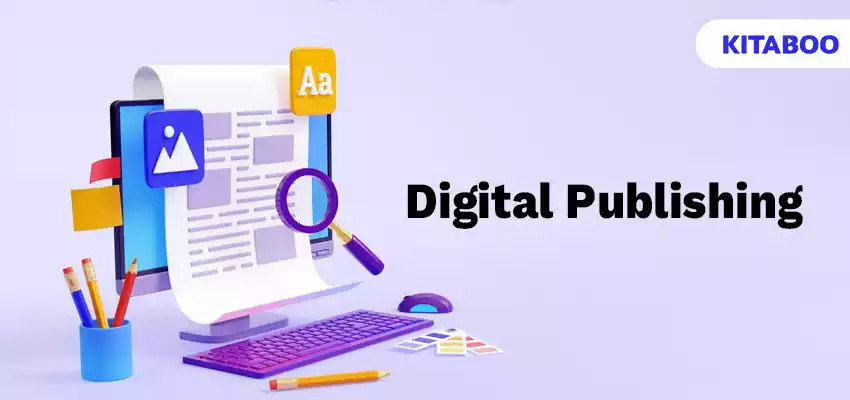
Digital Publishing Solutions: Innovate and Excel in 2024
The blazing content revolution brought about by the widespread adoption of the internet has enabled greater access to information. This onset has, however, also set in motion a certain trivialization of traditionally published content. With access to a wealth of content and information at our fingertips, traditional print media has had to adapt and keep up with new ways of distributing content.
Nuanced implementations of the best digital publishing platforms allow publishers to keep up with the ever-growing need for new content, utilizing automated content management features and extensive analytics to optimize their workflows.
In this blog, we will explore the need for digital publishing solutions, the benefits they bring, and how they revolutionize the publishing industry in a new era of rapid content consumption.
Table of Contents:
I. The Evolution of Digital Publishing
II. Key Features of Digital Publishing Solutions
- Interactive Content and Multimedia Integration
- Data Analytics and Personalization
- Response Design and Cross-Platform Compatibility
- Artificial Intelligence for Content Optimization
III. Challenges in the Field of Digital Publishing
IV. Innovative Strategies for Digital Publishing
V. Conclusion
The Evolution of Digital Publishing
Traditional media began with the idea of content distribution, allowing for the spread of invaluable information. In today’s age of smartphones and computers, digital publishing solutions act as a more advanced vehicle for expediting this drawn-out process.
Today’s modern solutions incorporate a range of technologies and tools designed to streamline the publishing process and enhance the overall user experience. According to a 2023 report by Market Reports World, the global digital publishing market was valued at $118,410 million in 2022 and is expected to reach $226,070 million by 2029, putting into perspective this shift toward digital avenues of content distribution.
Digital textbook platforms, such as KITABOO, simplify the entire workflow, from content creation to distribution and analytics, to drive innovations in digital publishing.
Key Features of Digital Publishing Solutions
In order to get a better sense of the simplicities enabled by digital platforms, let’s take a look at some of their key features:
1. Interactive Content and Multimedia Integration
2. Data Analytics and Personalization
Advanced analytic tools integrated into digital publishing platforms provide valuable data and insights into reader preferences, engagement patterns, and demographics. Meticulously implementing their received insights allows publishers to refine and personalize content for a more engrossing user experience.
3. Responsive Design and Cross-Platform Compatibility
The content revolution involves the access of content across a vast range of devices, such as smartphones, laptops, and tablets. This necessitates the optimization of content in such a way that it can create the best possible experience for the largest number of devices.
Digital textbook platforms such as KITABOO allow publishers to optimize their digital content and integrate with popular learning management software systems.
4. Artificial Intelligence for Content Optimization
AI-powered algorithms can analyze vast amounts of data to identify trends, keywords, and user behavior, allowing publishers to create content that resonates with their target audience. Solutions incorporating automation enhance the efficiency of the content creation and distribution process.
Challenges in the Field of Digital Publishing
Publishers face several challenges that can hinder their progress. These can be mitigated by the right publishing solution.
Let’s see how.
Content Monetization
With the immense amount of free content available online, for a publisher, finding a balance between the amount of paid or free content they provided is crucial. Publishing platforms facilitate the implementation of innovative monetization models, such as subscription services, ad-supported content, and premium access.
Content Quality Control
Maintaining quality control while consistently producing engaging content requires comprehensive plans and intense management. Digital solutions that include content curation features, automated editing tools, and collaborative workflows help publishers streamline the content creation process.
Guide:
How to Build an eBook Store
Adapting to Technological Changes
Publishing platforms today allow publishers to adopt new technologies seamlessly, without disrupting existing workflows. Flexible and scalable, these solutions can easily integrate with emerging technologies and empower publishers to embrace change.
User Engagement and Retention
With the abundance of digital content available, retaining user attention and fostering engagement can be a constant challenge. Digital solutions can help implement features that encourage user interaction, such as comment sections, social media integration, and personalized recommendations.
Innovative Strategies for Digital Publishing
The future of digital publishing can be foreseen in the emerging technologies surrounding it.
Let’s take a look at the innovative advancements that are going to maximize the potential of digital publishing platforms:
Augmented Reality (AR) and Virtual Reality (VR) Integration:
As AR and VR technologies continue to advance, publishers can leverage these immersive experiences to captivate their audience. Publishing solutions that support AR and VR integration enable publishers to create interactive and three-dimensional content, providing readers with a unique and engaging experience.
Voice-Activated Content:
Digital platforms can incorporate voice-activated features and allow users to listen to articles, summaries, and even entire books. This accessibility feature helps publishers cater to a broader audience while making good use of the rise of voice-enabled devices.
Collaborative Content Creation Platforms:
Publishing platforms that facilitate collaborative content creation, editing, and feedback, streamline workflows for editorial teams. Cloud-based platforms with real-time collaboration features empower teams to work together without being limited by their physical locations.
Blockchain for Content Authenticity:
As misinformation becomes a growing concern, blockchain technology can be employed to verify the origin and ownership of content, providing readers with confidence in the information they consume. Solutions that employ blockchain enhance content integrity and combat the spread of misinformation.
Conclusion
Embracing innovative digital publishing solutions is essential for publishers to excel and stay ahead of the curve. From responsive design and interactive content to blockchain security and AI-driven optimization, the solutions available today offer a wide range of tools to enhance the entire publishing workflow.
To navigate the challenges posed by traditional publishing workflows, digital publishing platforms allow publishers to adopt a forward-thinking approach. Integrating AI automation, voice-activated content, and collaborative workflows helps publishers set themselves apart and create unique and engaging experiences for their audience.
Digital textbook platforms such as KITABOO allow publishers to resolve a variety of their publishing needs, enabling content creation and distribution to become a dynamic, cross-collaborative, and intuitive process.
Related Reads:
- Innovative Digital Publishing Solutions for Forward Thinkers
- Digital Publishing Solutions in 2024: Elevate Your Content
- 5 Digital Publishing Strategies to Drive Growth in 2024
- Digital Publishing Revolution: Trends and Strategies for You
- Digital Textbook Platform for K12 Publishers
- Digital Textbook Platform for Associations & Societies
- Digital Textbook Platform for Trade Publishers
- Digital Textbook Platform for Training Companies
- Digital Publishing Solution for Content Aggregators
Discover how a mobile-first training platform can help your organization.
KITABOO is a cloud-based platform to create, deliver & track mobile-first interactive training content.



